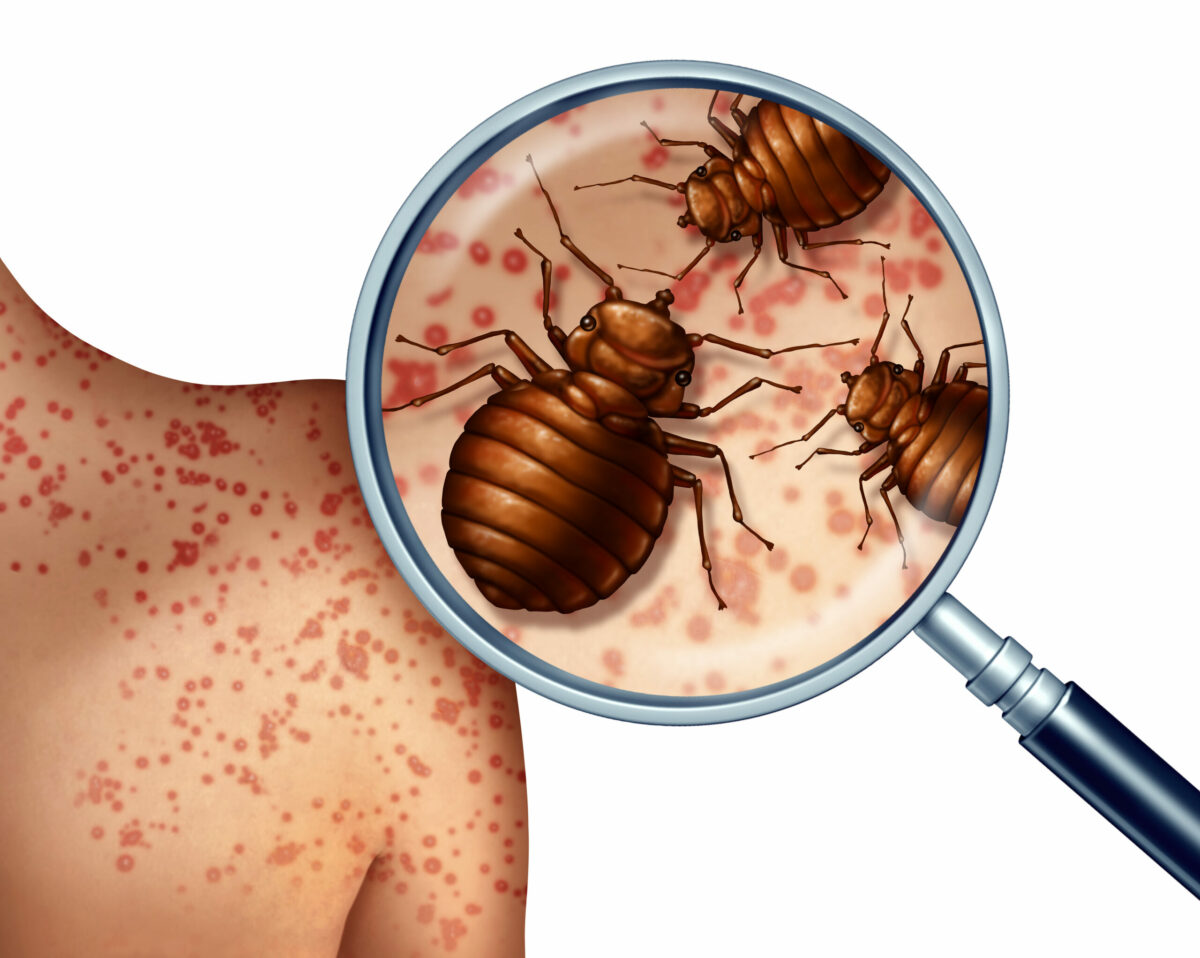Exterminate the Pests: 2023 Bed Bug Treatment Cost Breakdown by Experts
Bed bug infestations have become a growing concern for homeowners and property managers in 2023. These resilient pests are not only a nuisance but also pose health risks to residents.
As a result, the demand for efficient and cost-effective bed bug treatments has skyrocketed. The cost of bed bug extermination can vary widely depending on the severity of the infestation and the chosen treatment method.
Industry experts have now revealed key insights into bed bug treatment costs, providing a clear path for those seeking professional help to combat these unwelcome insects.
When considering the cost of bed bug treatment, factors such as the size of the infested area, the complexity of the treatment, and the required follow-up visits contribute to the total expense.
Factors Influencing Bed Bug Treatment Cost
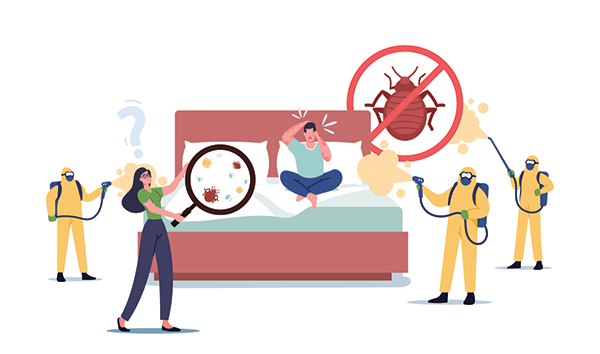
Severity of Infestation
The severity of a bed bug infestation plays a significant role in determining the treatment cost.
A more severe infestation requires additional attention, pest management professionals, and resources to eliminate the problem.
This means a higher number of treatments may be needed to ensure the complete eradication of bed bugs. For instance, a light infestation might require only one to two treatments, whereas a heavy infestation might need three or more treatments to eliminate the pests.
Location of Infestation
Another factor affecting bed bug treatment cost is the location of the infestation within the home. Bed bugs can hide in various places, such as mattresses, furniture, and even walls or ceilings.
If bed bugs are primarily confined to a single room or piece of furniture, the treatment cost may be lower.
However, if they have spread throughout the entire home, the treatment cost will be higher due to the larger treatment area and the need for more extensive inspection and treatment methods. In some cases, treating inaccessible locations may require specialized equipment or techniques, thereby increasing the treatment cost.
Size of Home
The size of the home also impacts the cost of bed bug treatment. Larger homes generally have more rooms and furniture, which means more areas need to be inspected and treated for bed bugs.
As a result, the cost of treating a larger home will be higher compared to a smaller home. Additionally, if the infestation has spread throughout the entire residence, the treatment cost may increase proportionally based on the total area that needs to be addressed.
In summary, bed bug treatment costs can be influenced by factors such as severity of the infestation, location of the infestation within the home, and the size of the home. Each of these factors can contribute to how extensive the treatment process needs to be, as well as the resources and time required to effectively eliminate the pests.
Types of Bed Bug Treatments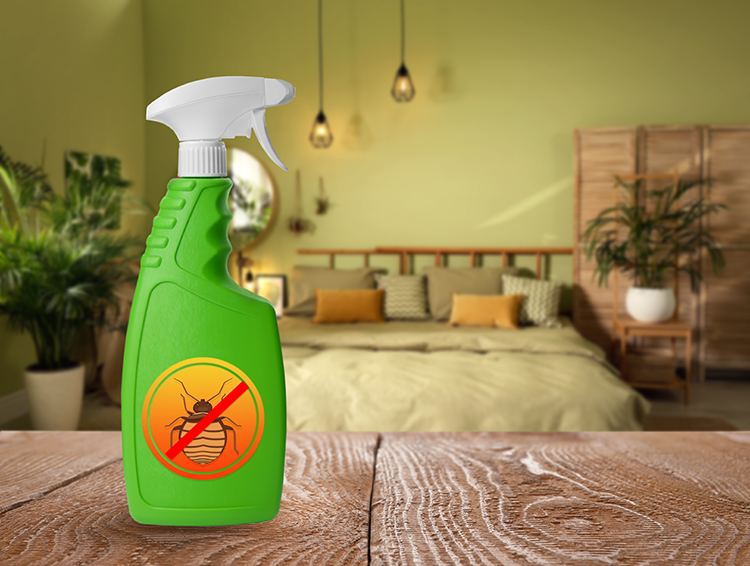
Heat Treatment
Heat treatment is an effective method for exterminating bed bugs. It involves raising the temperature of an infested area to a level that is lethal for the pests.
This method can be applied using specialized equipment such as thermal heaters and fans, which uniformly distribute the hot air throughout the space.
Heat treatments are efficient in killing all stages of bed bugs, from eggs to adults, and can be completed within a few hours. However, it is essential to ensure that the heat is evenly distributed, as bed bugs may survive in cooler pockets within the treated area.
Steam Treatment
Steam treatment is a non-toxic and eco-friendly approach for managing bed bug infestations. A high-temperature steam generator is used to apply steam directly to infested areas, such as mattresses, furniture, and carpets.
This method has proven effective in killing all life stages of bed bugs, but it may require multiple applications to ensure complete eradication. Care should be taken when using steam treatments near electrical outlets and electronics, as moisture damage may occur.
Chemical Treatments
Chemical treatments are widely used for bed bug control and include a variety of insecticides, such as pyrethrins, pyrethroids, pyrroles, neonicotinoids, and insect growth regulators. These chemicals can be applied as dust, liquid sprays, or foggers.
Each chemical class has a unique mode of action, and the choice of chemical depends on the specific infestation scenario and level of resistance exhibited by the bed bugs.
It is crucial to follow the label and safety guidelines when using chemical treatments and consult with a pest management professional for proper application.
- Pyrethrins and Pyrethroids: These are synthetic versions of naturally occurring chemicals found in chrysanthemum flowers. They act on the nervous system of bed bugs, causing paralysis and eventual death.
- Pyrroles: Chlorfenapyr is a common pyrrole-based insecticide used against bed bugs. It disrupts cell function, resulting in the death of the bed bugs.
- Neonicotinoids: These synthetic chemicals are similar to nicotine and classified as neuro-active insecticides. They disrupt the nervous system of bed bugs, leading to paralysis and death.
- Insect Growth Regulators: These chemicals mimic juvenile hormone or the molting hormone (chitin synthesis inhibitors). They interfere with the normal development of bed bugs, causing them to be unable to reproduce or molt, leading to population decline.
Freezing Treatment
Freezing treatment is another non-toxic option for bed bug control. It involves using specialized equipment that generates a cold environment, causing the temperature to drop rapidly to a level that is lethal to the pests.
The freezing treatment can kill bed bugs at all stages of their life cycle. However, this method requires more time compared to heat treatments, and larger infested items may not be suitable for freezing treatment due to the potential risk of damage from the rapid cooling.
Bed Bug Extermination Process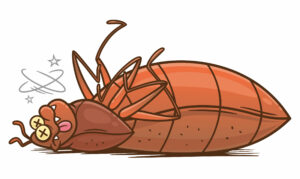
When dealing with a bed bug infestation, the extermination process starts with a comprehensive treatment plan. This plan includes identifying the signs of bedbugs, choosing an effective detection method, and selecting the most appropriate treatment type. A thorough and well-crafted plan ensures successful extermination, thereby preventing future infestations.
The first step in the bed bug extermination process is recognizing the presence of these pests. Signs of bedbugs include small red or brown spots on bedding, molted exoskeletons, and a musty odor.
Once the infestation is confirmed, a pest control professional will use reliable detection methods, such as visual inspections, canine inspections, or monitoring devices, to determine the extent of the infestation.
Next, the professional will choose a treatment type that best suits the specific infestation. There are several options available, including chemical treatments utilizing pesticides, non-chemical treatments such as heat or cold treatments, and integrated pest management (IPM) methods that combine multiple approaches. Each treatment type carries its benefits and drawbacks in terms of efficacy, cost, and environmental impact.
For those considering a DIY bed bug extermination approach, it’s essential to note that success can be challenging to achieve if the proper procedures are not utilized.
While some over-the-counter pesticides and commercial-grade products can help reduce bed bug populations, these pests are often resistant to common chemicals.
Also, improperly applied pesticides can pose risks to human health and the environment.
We provide extensive knowledge of techniques and treatments to ensure effective bed bug extermination.
The approach typically involves several stages, such as initial inspection, treatment implementation, and follow-up inspections to monitor the situation and adjust the treatment plan as necessary. Check out our article on bed bug inspection for a thorough walk through.
Professional Inspection Options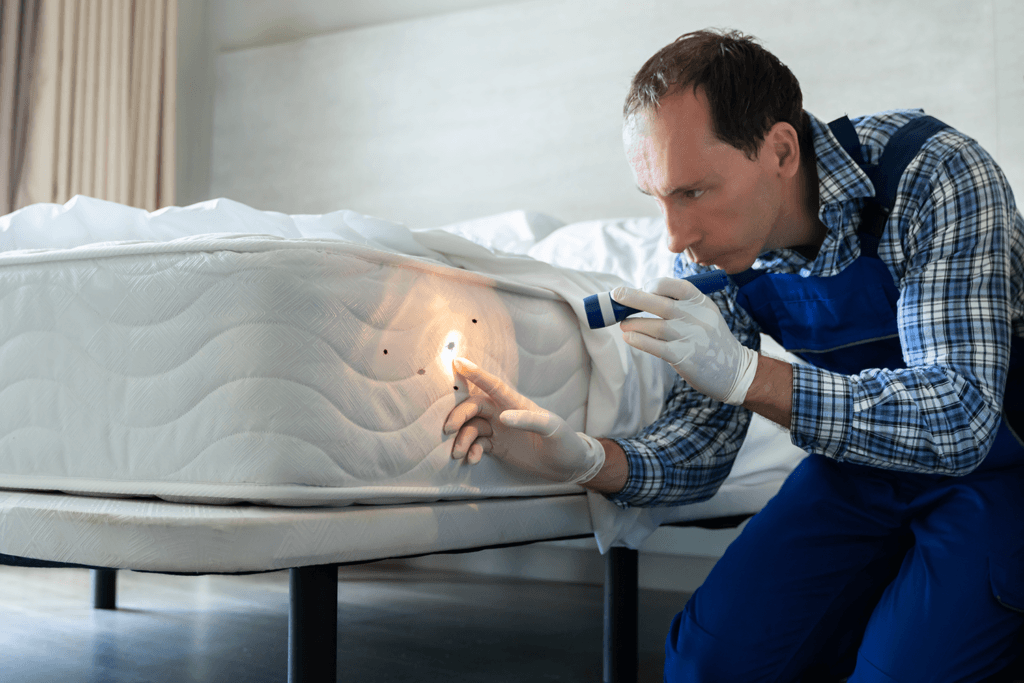
If you’re not up to task for a DIY treatment, a professional inspection is a crucial step in the battle against bed bug infestations. Pest control companies offer various inspection methods to identify the presence of bed bugs and determine the extent of infestation in both residential and commercial properties. Let’s look at some of the commonly used inspection techniques and the cost factors associated with them.
One popular inspection method employed by pest control experts is the visual inspection. Technicians carefully examine the area, looking for physical signs of bed bugs such as live bugs, fecal matter, and shed exoskeletons.
These inspections are often performed using specialized tools like magnifying glasses, flashlights, and crevice tools to access hard-to-reach areas. The cost of a visual inspection typically depends on the size and complexity of the property.
For example, a smaller residential unit may be less expensive to inspect than a complicated commercial building with multiple rooms and floors.
Another option for bed bug inspection is the use of canine detection teams. Sniffing dogs are specifically trained to detect the presence of bed bugs by their scent, making them highly effective in locating infestations that may be challenging to find through visual inspection alone.
Canine inspections are often faster than their human counterparts, leading to a more efficient and less intrusive inspection process. However, the cost of canine detection tends to be higher than visual inspection,Given the specialized training and maintenance expenses associated with these animals.
Pest control companies may also employ alternative techniques such as monitoring devices and traps to assess the extent of a bed bug infestation.
These devices may be placed in strategic locations throughout the property to detect bed bug activity over a period of time. The cost of this method may vary depending on the duration of monitoring and the type of devices used.
When choosing professional inspection options, it’s essential to consider factors such as the size of the property, the severity of the infestation, and budget constraints. Ultimately, the key to successful bed bug control lies in early detection and accurate assessment of the problem, allowing for more targeted and effective treatment strategies.
Additional Costs and Considerations
When considering bed bug treatment, it’s essential to factor in additional costs and elements that can impact treatment success and expenses. One crucial aspect to consider is the treatment frequency needed to ensure the complete extermination of adult bed bugs, their eggs, and feces. This may involve multiple visits to effectively eliminate them.
Layouts that can contain clearances for potential bed bug hiding places should be contemplated. DIY bed bug removal methods can be much more affordable than hiring professional help but can also be less effective or even worsen the infestation if applied incorrectly.
Quotes for professional bed bug extermination may vary depending on factors such as location, severity of the infestation, and the specific treatment option chosen. It’s essential to request quotes from multiple service providers and compare them to find the best value for your money.
Another vital aspect to consider is the service guarantee. Pest control professionals may offer a service guarantee, which ensures that they will return and re-treat the infested area at no additional cost if bed bugs continue to persist after the initial treatment.
Furthermore, you must consider the impact on your everyday life. The need for temporary relocation, removing and laundering infested items, or replacing furnishings can have a significant effect on your overall comfort and convenience during the bed bug elimination process.
Cleaning and proper maintenance are both essential steps in preventing reinfestation after successful treatment.
In summary, eliminating bed bugs is a complex process that requires attention to treatment frequency, service guarantees, and additional expenses that may be incurred throughout the extermination process.
Careful consideration of all factors and a well-informed decision can make the difference in effectively and efficiently resolving the issue.
Prevention and Health Risks
Preventing bed bug infestations is crucial to avoid the associated health risks and treatment costs. One of the effective measures for prevention is to maintain cleanliness and reduce clutter at home.
Bed bugs often hide in cracks, crevices, and cluttered areas. Additionally, when traveling, inspect hotel rooms, luggage, and personal belongings for any signs of bed bugs.
Bed bug bites can cause different reactions in individuals, ranging from mild itching to severe allergic reactions. In most cases, the bites are not life-threatening, but they may result in discomfort and disrupted sleep. Moreover, the constant itching caused by bed bug bites can lead to skin infections if not properly taken care of.
In terms of health risks, bed bug eggs and feces pose potential hazards, especially for people with allergies or asthma. Bed bug feces consist of proteins that can trigger allergic reactions in sensitive individuals, while bed bug eggs can spread the infestation if not detected and removed promptly.
Another health risk is the mental impact a bed bug infestation can have on the people affected. Check out my article on the psychological effects of bed bugs for an in depth look.
Using bed bug-proof mattress and pillow encasements, as well as regularly vacuuming carpets, upholstery, and other areas can help minimize the risk of infestation. Nevertheless, early detection and intervention are critical to reduce the possibility of a large scale infestation and the need for costly treatments.
In conclusion, a proactive approach in preventing bed bug infestations and being vigilant about early signs can reduce both health risks and treatment expenses. Remember to be cautious when traveling and ensure proper home cleanliness and maintenance to prevent the occurrence of bed bugs in your living space.
Insurance and Extermination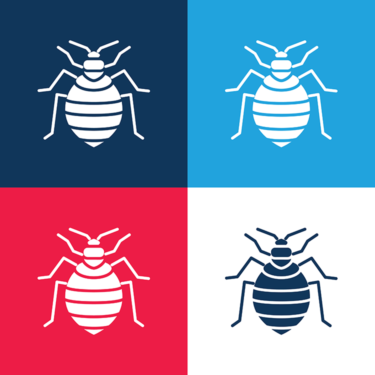
When dealing with a bed bug infestation, one of the primary concerns for homeowners and renters is the cost of extermination. The average cost of bed bug extermination can be quite high, often ranging between $500 and $1500 depending on factors like the extent of infestation and the methods used.
One important aspect to consider is whether or not your insurance policy covers bed bug extermination. Most homeowners and renters insurance policies do not include coverage for pest damage or removal. However, there are a few insurance providers that offer optional pest coverage endorsements, which may include bed bugs.
If your insurance policy does not cover the costs of bed bug extermination, you may want to explore alternative options such as professional pest management companies.
These companies typically offer different packages and payment plans for their services. Since bed bug exterminator costs can vary, it’s essential to obtain multiple quotes from different providers before making a decision.
Keep in mind that the cheapest option might not always be the best choice, as quality and effectiveness are crucial factors in a successful bed bug treatment. A thorough and comprehensive approach, using both chemical and non-chemical methods, is usually required for an effective and long-lasting solution.
Remember, when facing a bed bug infestation, it’s essential to understand the costs involved, your insurance coverage, and the extermination options available. By carefully analyzing these aspects, you can make an informed decision and choose the most suitable bed bug treatment for your situation.
Conclusion
In recent years, bed bug infestations have become an increasingly prevalent issue worldwide. Among the factors contributing to this resurgence are increased global travel and the development of pesticide resistance in bed bug populations1.
The demand for effective and affordable bed bug treatment services is paramount for both residential and commercial properties.
After thorough examination and consultation with industry experts, the average cost of bed bug treatment in 2023 is found to be dependent on factors such as location, level of infestation, and the chosen treatment method.
Common treatment options can include heat treatments, chemical insecticides, and biopesticides like Beauveria bassiana.
Each treatment comes with its own set of advantages and drawbacks, which need to be carefully evaluated by the property owner before deciding on the most suitable approach.
Understanding the intricacies of bed bug control methods will allow individuals and businesses to make more informed decisions when choosing a pest control service.
While costs may vary from region to region and depending on specific requirements, investing in regular inspections and high-quality treatments is crucial for ensuring long-term success in exterminating these persistent pests.
Education and awareness of bed bug treatment options and related costs are vital in the battle against these pests. The ongoing development of effective, affordable, and environmentally responsible control methods is of utmost importance to safeguard our homes and businesses from these unwanted visitors.
Footnotes
Frequently Asked Questions
1. What are bed bugs?
Bed bugs are small insects that feed on human blood. They are reddish-brown in color and are typically found in mattresses, furniture, and other areas where people sleep or rest.
2. How can I get rid of bed bugs?
To get rid of bed bugs, you can hire a professional exterminator who specializes in bed bug treatment. They will use various methods such as heat treatment, chemical treatment, or a combination of both to eliminate the bed bug infestation.
3. How much does a bed bug exterminator cost?
The cost of a bed bug exterminator can vary depending on the extent of the infestation, the size of the property, and the treatment method used. On average, you can expect to pay around $2023 for a professional bed bug extermination.
4. What are the signs of bed bugs?
The signs of bed bugs include small red bites on the skin, blood stains on the sheets, dark or rusty spots on mattresses or furniture, and a sweet, musty odor in the infested area.
5. Should I hire a professional bed bug exterminator or try DIY methods?
If you have a serious bed bug infestation, it is recommended to hire a professional bed bug exterminator who has the knowledge and experience to effectively eliminate the problem. DIY methods require knowledge and hands on approach to the problem. You can refer to this site for any info you need or contact us with any questions.
6. How can I prevent bed bugs from entering my home?
To prevent bed bugs, you should regularly inspect your bedding and furniture for any signs of infestation, avoid bringing used furniture into your home without proper inspection, and use protective covers on your mattresses and pillows.
7. What is the average cost of bed bug treatment?
The average cost of bed bug treatment can range from $500 to $1500, depending on the size of the infested area and the treatment method used.
Recent News
What Countries are the Most Infested by Bed Bugs in 2024
Explore the Finest Cedar Wood Oil Products



